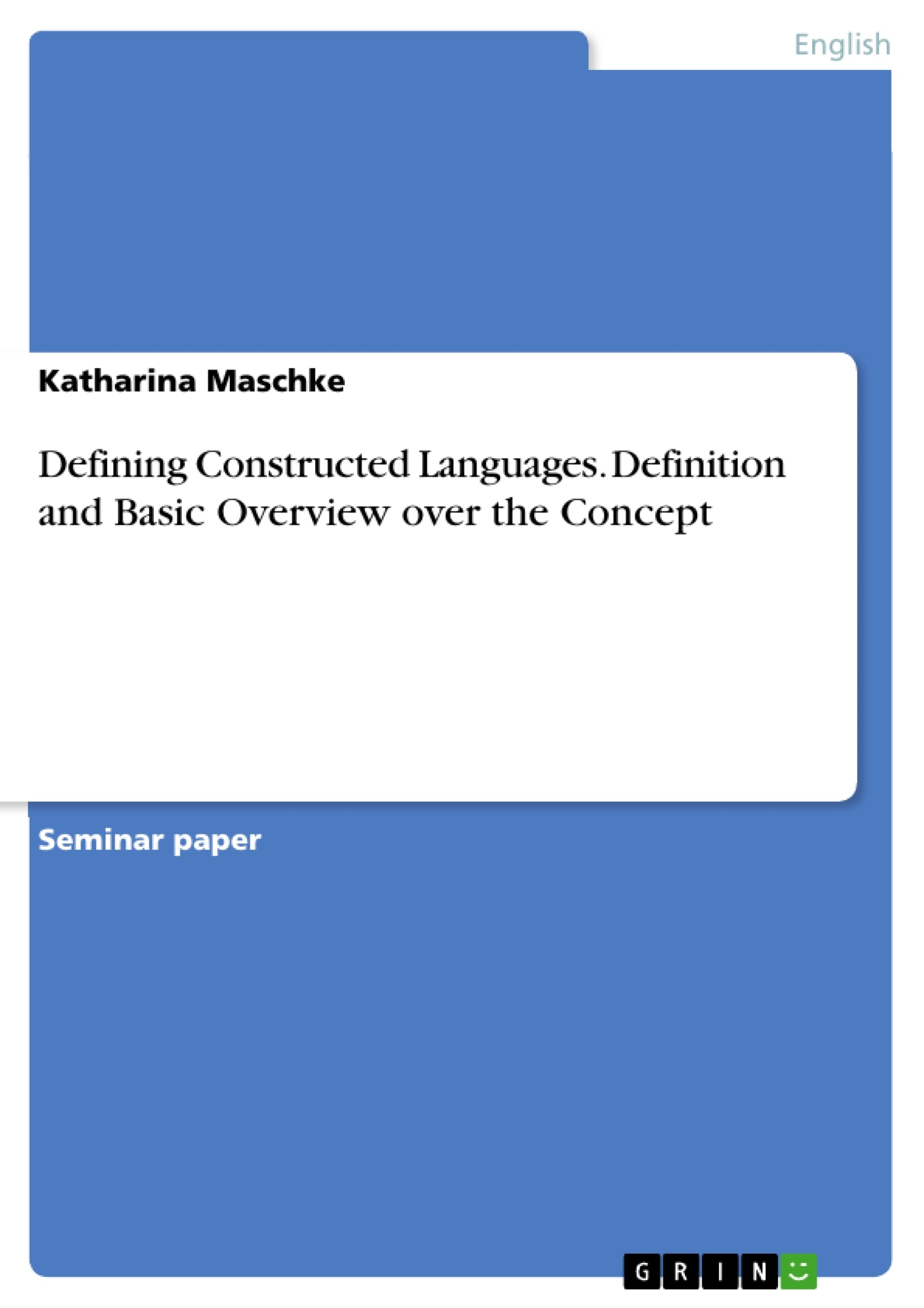In the last years, constructed languages have experienced a rise in popularity. Star Trek, The Lord of the Rings, and Game of Thrones feature constructed languages that have since been celebrated, examined, and learned by fans. However, the field of constructed languages is much larger than these so-called artistic languages. Definitions are blurry, and the terminology is inconsistent. This term paper aims at defining constructed languages and providing a basic overview for those who are new to the concept. The comprehensive definition will be a result of examining the terminology and history of language construction.
Humans have been concerned with language for centuries. With this, language has not only fulfilled its purpose as a communicative medium, but it has left an impression on generations and nations. According to the Bible, the earth used to be of one people and one language until the people became boastful and began building a tower to reach heaven. When God saw their arrogance, he decided to confuse their languages so that they were unable to proceed with their project and instead scattered all over the earth
Table of Contents
- Introduction
- Literature
- Perspectives on Constructed Languages
- Purposes of Constructed Languages
- Artistic Languages
- Auxiliary Languages
- Engineered Languages
- Classification Models
- Structure
- Source Material
- Structure Compared to Natural Languages
- Historical Developments
- Approaches to Constructed Languages
- Linguistics
- Literature and Literary Studies
- Teaching
- Culture Studies
- Purposes of Constructed Languages
- Conclusion
Objectives and Key Themes
The objective of this paper is to develop a comprehensive definition of constructed languages, considering their history, purposes, structures, and approaches to their creation. This will involve reviewing existing literature, examining various aspects of constructed languages, and ultimately deriving a robust definition for universal understanding.
- Defining "constructed language" by analyzing its constituent parts.
- Exploring the various purposes and functions of constructed languages.
- Comparing the structure of constructed languages to natural languages.
- Investigating the historical development of constructed languages.
- Examining diverse approaches to the study and creation of constructed languages from different academic disciplines.
Chapter Summaries
Introduction: This chapter introduces the concept of constructed languages, contrasting them with natural languages. It establishes the need for a comprehensive definition by exploring the etymology of "construct" and examining existing definitions of "language." The chapter highlights the role of metalinguistic awareness in the creation of constructed languages and sets the stage for a deeper investigation into their various aspects.
Literature: [This section will be populated based on the content provided in the actual 'Literature' chapter of the original text. The provided text snippet does not contain the content for this chapter.]
Perspectives on Constructed Languages: This chapter delves into various perspectives on constructed languages, exploring their purposes, structure, historical development, and different approaches to their study. It examines diverse types of constructed languages, including artistic, auxiliary, and engineered languages, and considers different models for classifying them. The chapter analyzes the source material used in constructing languages, compares their structure to natural languages, and explores their historical evolution within the broader context of linguistics, literature, teaching, and culture studies. This chapter's synthesis of these diverse approaches aims at enriching the overall definition of constructed languages.
Keywords
Constructed languages, natural languages, metalinguistic awareness, language construction, linguistic structures, auxiliary languages, engineered languages, artistic languages, classification models, historical development, linguistics, literature, teaching, culture studies, definitions of language.
Frequently Asked Questions: A Comprehensive Language Preview
What is the purpose of this document?
This document provides a comprehensive preview of a work on constructed languages. It includes the table of contents, objectives and key themes, chapter summaries, and keywords, offering a structured overview of the text's content and scope.
What topics are covered in the "Perspectives on Constructed Languages" chapter?
This chapter explores various perspectives on constructed languages, examining their purposes (artistic, auxiliary, engineered), structure (compared to natural languages), historical development, and approaches to their study from different academic disciplines (linguistics, literature, teaching, culture studies). It also includes discussions of classification models and source materials used in their creation.
What are the main objectives of the paper?
The paper aims to develop a comprehensive definition of constructed languages, considering their history, purposes, structures, and creation approaches. This involves reviewing existing literature, examining various aspects of constructed languages, and ultimately deriving a robust definition for universal understanding.
What are the key themes explored in the paper?
Key themes include defining "constructed language," exploring their purposes and functions, comparing their structure to natural languages, investigating their historical development, and examining diverse academic approaches to their study and creation.
What is the content of the Introduction chapter?
The introduction introduces the concept of constructed languages, contrasting them with natural languages. It establishes the need for a comprehensive definition by exploring the etymology of "construct" and examining existing definitions of "language." It also highlights the role of metalinguistic awareness in the creation of constructed languages.
What does the chapter on Literature cover?
The provided preview does not contain the content for the 'Literature' chapter. This section will be populated with relevant literature from the full text.
What keywords are associated with this paper?
Keywords include: Constructed languages, natural languages, metalinguistic awareness, language construction, linguistic structures, auxiliary languages, engineered languages, artistic languages, classification models, historical development, linguistics, literature, teaching, culture studies, and definitions of language.
What is the overall structure of the document preview?
The preview is structured to provide a clear and concise overview, including a table of contents, objectives, key themes, chapter summaries, and keywords. This allows for easy navigation and understanding of the main topics and arguments presented in the complete work.
- Citation du texte
- Katharina Maschke (Auteur), 2021, Defining Constructed Languages. Definition and Basic Overview over the Concept, Munich, GRIN Verlag, https://www.grin.com/document/1042120



